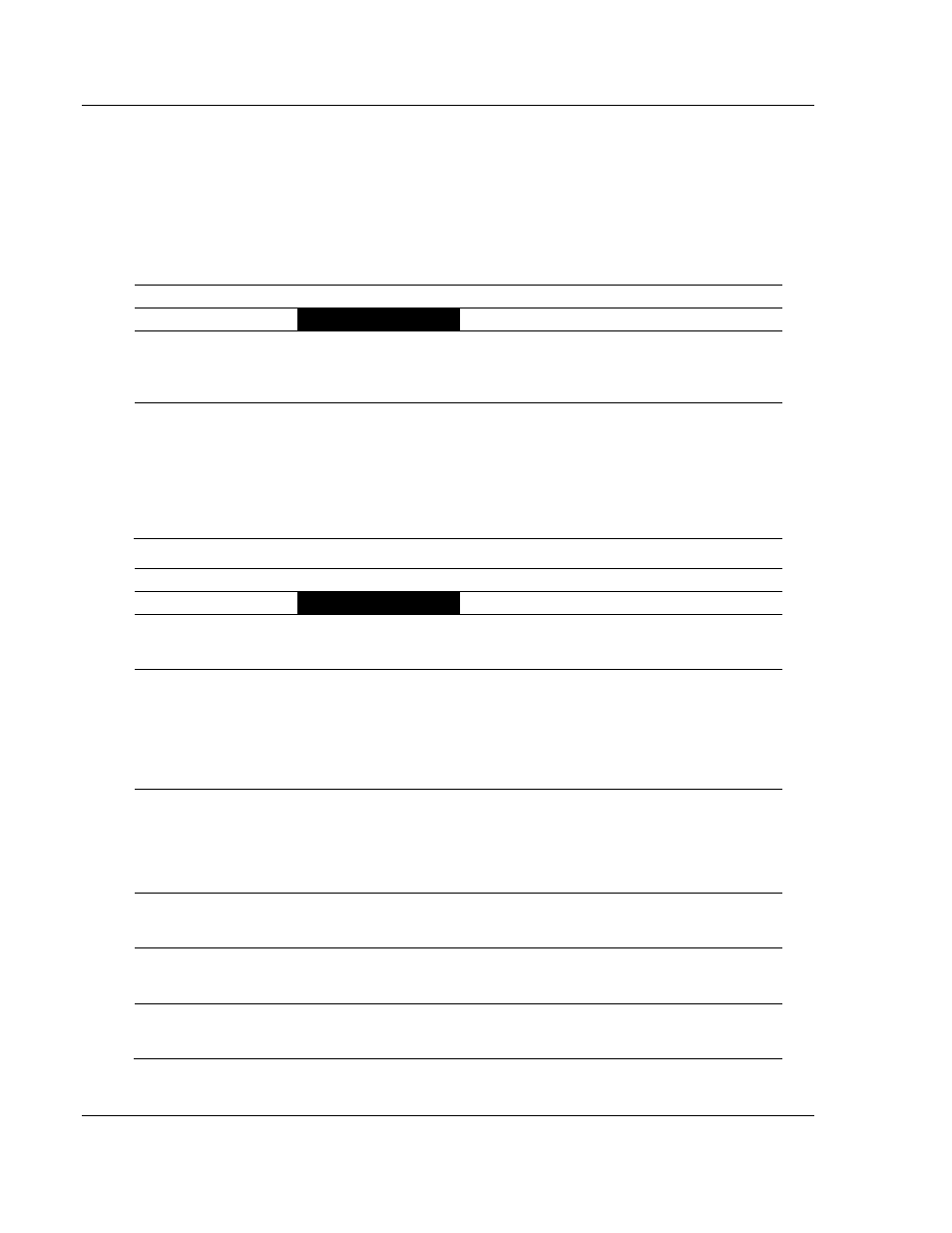ProSoft Technology MVI69-GSC User Manual
Page 40

Configuring the MVI69-GSC Module
MVI69-GSC ♦ CompactLogix or MicroLogix Platform
User Manual
Generic ASCII Serial Communication Module
Page 40 of 102
ProSoft Technology, Inc.
September 24, 2010
2.6
Configuration Data
This section contains listings of the MVI69-GSC module's database that are
related to the module's configuration. This data is available to any node on the
network and is read from the CompactLogix processor when the module first
initializes. Additionally, this section contains the miscellaneous status data and
command control database layout.
[Section]/Item
Value
Range
Description
[MODULE]
Module section header
Module Name:
0 to 80
characters
This parameter assigns a name to the module that
can be viewed using the configuration/debug port.
Use this parameter to identify the module and the
configuration file.
Backplane Fail Count:
0 to 65535
This parameter specifies the number of
successive transfer errors that must occur before
the communication ports are shut down. If the
parameter is set to zero, the communication ports
will continue to operate under all conditions. If the
value is set larger than 0 (1 to 65535),
communications will cease if the specified number
of failures occur.
[Section]/Item
Value
Range
Description
[GSC Port 0]
GSC port definition header
Enabled:
Yes or No
This parameter defines if this port will be utilized.
If the parameter is set to No, the port is disabled.
A value of Yes will enable the port.
Type:
0 to 15
This parameter specifies the receive termination
characteristics for the port. This value is bit
mapped as follows: Bit 0 = Termination
character(s) used, Bit1=Message timeout used,
Bit2=Intercharacter delay timeout used and
Bit3=Packet size limit used. If the parameter is set
to zero, the port is placed in stream mode.
Baud Rate:
From selected
list of codes
This is the baud rate to be used on the port. Enter
the baud rate as a value. For example, to select
19K baud, enter 19200. Valid entries for this field
include: 110, 150, 300, 600, 1200, 2400, 4800,
9600, 19200, 384 or 3840 for 38400, 576 or 5760
for 57600 and 115 or 1150 for 115200.
Parity:
None, Even,
Odd, Mark or
Space
This is the Parity code to be used for the port. The
values are as follows: None, Odd, Even, Mark and
Space.
Data Bits:
5 to 8
This parameter sets the number of data bits for
each word used by the protocol. Valid entries for
this field are 5, 6, 7 and 8.
Stop Bits:
1 or 2
This parameter sets the number of stop bits to be
used with each data value sent. Valid entries for
this field are 1 and 2.
